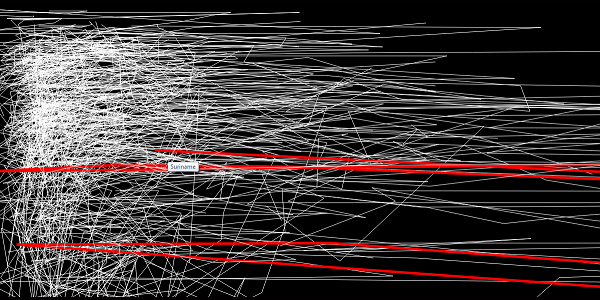Visualising news, the right code for the right story

The first Hacks/Hackers meetup in Prague was a unique opportunity to meet people with clever and innovative ideas about technology and society. I was invited to talk about one of my favourite topics, information visualisation. In the presentation I focused on the relationship between creativity and tool complexity as well as the cost of implementing journalistic projects using information visualisation. I'll use this post to dive into some of the key aspects from this presentation.
Different tools for different projects
I grouped the tools I've used for information visualisation in two categories, "reduced creativity" and "enhanced creativity". Generally speaking, with creativity comes more flexibility. While enhanced tools are more complex, they often require advanced skills to produce the desired results. I put tools like D3, Processing, Javascript and CSS in this category. The results from these are only limited to your skills and imagination. Of course, like many others, I recommend D3 for its flexibility and technical ability.
Examples of the more "reduced creativity" tools are Datawrapper, charts in Google docs, Illustrator and R. These are all very useful, but sometimes involve a compromise in terms of the desired outcome. While you might see some reduction in audience interactivity, these tools allow for an easier, streamlined process of creation.
Should news be quick and cheap?
A while back I read that "coding is expensive and slow, journalism should be cheap and fast". However, what I like about the development of information visualisation (and interaction) is the innovative, fresh approach to communication. The content and form of information visualisation should be developed in tandem and weighted equally.
So how could a fully innovative data visualisation effort be carried on in a newsroom or company effectively? There are several approaches one might take. Specifically, I see the following patterns happening in news organisations:
- Specialisation: Find a set of tools that produce the results you need and could be used in different scenarios, such as sports or financial data. You can increase the quality of your stories by focussing on producing visualisations for these use cases.
- Long term resources: Sometimes a visualisation becomes a resource that readers want to reference time and again. Examples of these might be the New York Times rent or buy calculator or the Berliner Morgenpost flights radar. These projects would need more time and effort to produce, but will offer readers a unique and informative experience.
- Rethink news: Do you want to put information at the forefront of the reader experience? New ways of reading are cropping up and traditional models of journalism are shifting towards curated information experiences. Examples of these are the market map from Market Watch, the Infomous news explorer and the Disqus homepage. In this scenario your content needs to consider how information is visualised.
"Reduced creativity", is there such a thing?
I am a D3 addict. But I believe there is a lot of potential in other tools. For example, I was recently impressed by the simplicity of this Javascript library that can easily embed sparklines in a web document. This enables creative writing, instead of creative coding. So being pragmatic and creative are not necessarily contradictory.
Wrapping up
At the end of this very short post, I can summarize my point. Do not accept compromises on quality, but consider compromises with technology. Expressive freedom surrounding information visualisation comes with technical awareness, and requires not just the support of your team, but the whole industry and research around it to develop.
